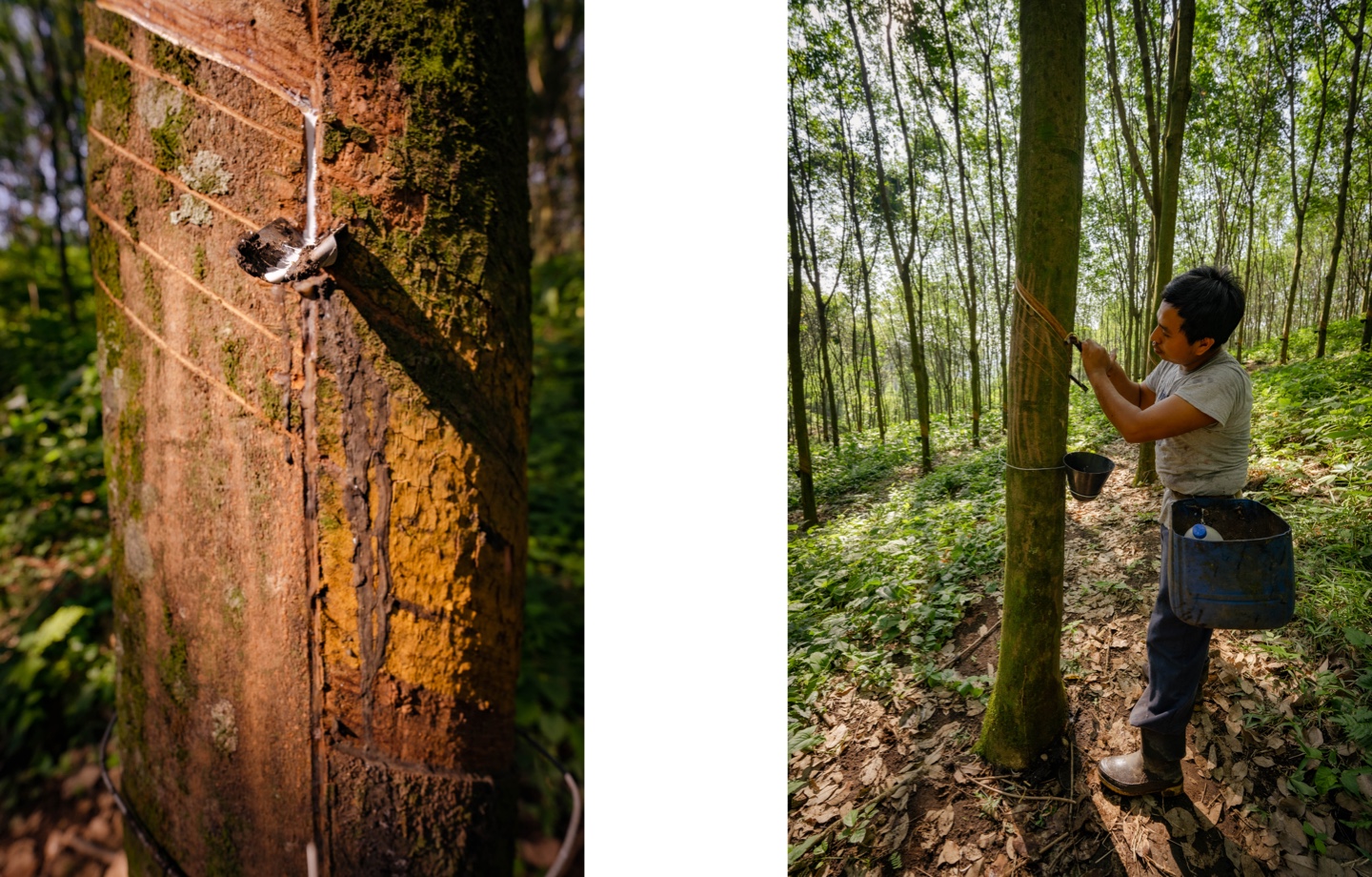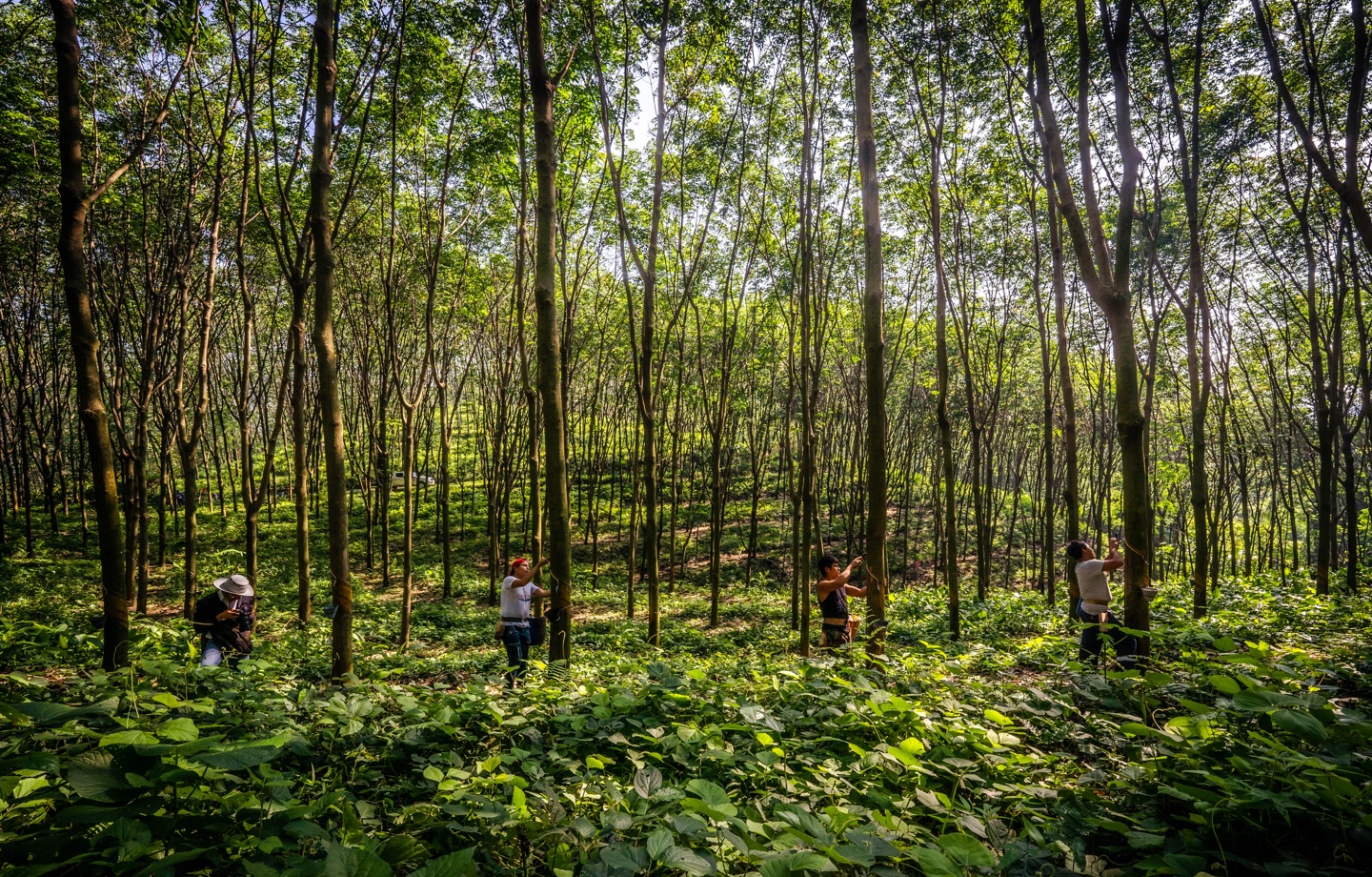How does tree sap become a bed? And what makes natural latex mattresses so expensive?
It’s 3 am. Most people are still asleep, but latex farmers like Doroteo Blanco, a tree cutter and harvester at the Guatelinda Plantation, which Avocado co-owns, in Guatemala, are already hard at work tapping rubber trees for a prized commodity — white, gooey sap that will become the foam cores in our natural latex mattresses.
Blanco doesn’t rely on complex tools or machinery. Instead, he taps rubber trees by hand, using a curved knife to cut a 2-millimeter-deep spiral around the tree to release the sap. Each day, farmers like Blanco head out before sunrise to take advantage of the early morning humidity, when the rubber trees are wet and release more latex sap. Over the course of the morning, they’ll tap more than 700 trees.
Avocado’s natural latex foam cores are created through a sustainable process that begins with the sap of rubber trees from farms in Guatemala and India, which we co-own. The process from extraction through manufacturing is long and takes precision and care. But the end-product is superior. Natural latex is easier on the planet, safer and healthier, and longer lasting than synthetic memory foam.
Want to know more? Get a behind-the-scenes look into the sustainable production of Avocado’s natural, GOLS-certified organic latex cores in the video produced by Business Insider above.

Read more: The Mattress Certifications You Need to Know

Shop Pillows
The Essential Organic Pillow Collection
Gentle, breathable, non-toxic support.







